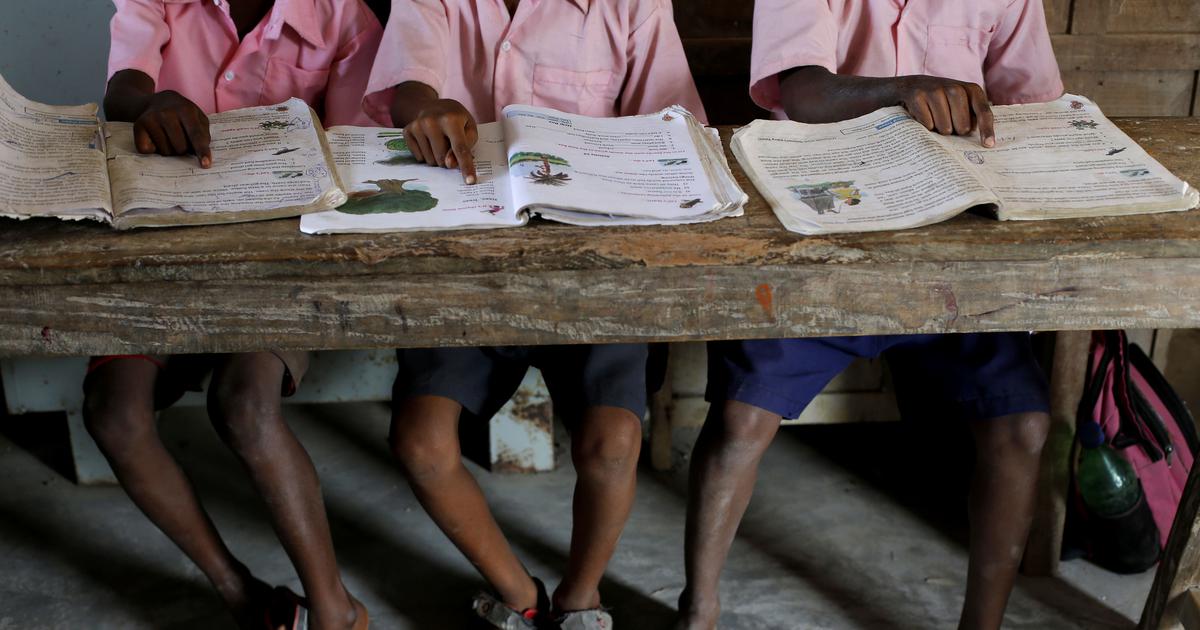Why we need government schools: They are the only educational lifeline for 60% of India’s children

There is change in our government schools if one cares to look for it. In a survey my colleagues conducted in 2005 in northeast Karnataka, only four out of ten schools had obtained uniforms and books in time for the start of the academic year. Today, this number has more than doubled. Nearly every school I visited had planned and procured books and uniforms well in time, even if it meant that their teachers had to sacrifice some holidays.
In most schools that we visited, attendance was over 90 per cent. In the Surpur block in northeast Karnataka where attendance, for years had stubbornly stuck at around 65 per cent, it has now moved close to 80 per cent.
In each of the hundred and ten schools, punctuality and presence of teachers were a given. In rural government schools, even these basic requirements of punctuality and regular attendance of children are significant signs of a vibrant culture.
In the same survey of 2005, some or the other form of student fights or corporal punishment was observed in seven out of ten schools. In contrast, in the schools that we visited this time, there was no sign of the “cane” nor physical fights among students beyond the usual pushing and shoving.
In 2005, the researchers had noted that around 15 per cent of the head teachers were not in school when they visited because they were away at the Block Education Office on some errand or the other. Not so today. Nearly every head teacher was present in the schools that we visited. A major reason for this is that head teachers are able to meet incessant demands for information from their headquarters by seeking help from their younger colleagues who are more IT- and internet-savvy.
This is also perhaps a good place in this essay to put to rest the bogey of teacher absenteeism that is a favourite flogging horse in public discourse. A study by the Foundation in 2017, across six states, in a sample of six hundred and nineteen schools covering two thousand eight hundred and sixty-one teachers, showed that teacher absenteeism, that is, absence without legitimate reason or truancy is less than 2.5 per cent.
The study noted that in difficult circumstances that one would often associate with high teacher absenteeism, these teachers and head teachers showed remarkable commitment (manifested in no perceivable absenteeism) and high levels of engagements in classrooms.
Ten to fifteen years ago, I would come across the odd heroic teacher during my field visits. This time, what I saw among the two hundred and fifty to three hundred teachers spoke of a journey of growth, self-expression and commitment that comes from an upward curve in the area of self-development. There were multiple strands that demonstrated this transformation.
One such change is that more teachers are writing a daily diary, reflecting on their school-day – the joys and struggles of teaching. The diary of a school teacher is a kaleidoscope of emotions but when it is introspective, it becomes a symbol of the learning teacher who wants to improve each day. The diaries of some teachers are so rich, they could be made mandatory reading in teacher education programmes.
This is remarkable progress from twelve years ago when teachers would be hesitant to even read academic articles. In 2005, when newsletters like Pravaah were sent to schools in Uttarkashi, teachers would have to be called together once in a few months and coaxed to read and discuss some of the essays. But by 2017, Pravaah had become a sixty-four-page publication with a number of articles contributed by teachers themselves.
Many of these teachers make up for their inadequacies in subject knowledge by their commitment to continuous self-development. There can be no greater evidence of this than the fact that some science teachers, acknowledged for their excellence in teaching the subject, have no formal degree in science. The lesson plans and activities, the worksheets and experiments that they had constructed were indicative of their efforts to learn and teach the subject.
Many teachers have acquired further educational qualifications through correspondence courses. When I spoke to them, their self- appraisal was honest and spontaneous: “My school can only be classified as ‘B’ category today but I hope it will reach ‘A’ in the future,” or, “There are at least twenty schools that are better; you must visit those (naming a few)“.
They also expressed their frustrations openly, accepting their limitations of subject knowledge, the wicked inadequacy of not being able to teach English as well as they would like to and the enormous struggle for resources.
But what was not lacking was the recurrent theme of personal ownership and pride. Confident that the community would sooner or later perceive the quality of education that their children were receiving, one teacher in a memorable turn of phrase, said to me, “Mark my words, there will be a reverse migration from private schools to our schools.”
Are the children learning better? At each of these schools, the answer to the question is a definitive “yes”. We saw a variety of classroom activities and children’s portfolios – from neat handwriting to the ability to read and write completely new sentences; the ability to solve not merely algorithmic but word problems; the ability at mental math and higher order thinking; and, the spirit of the “quicker” children to help their friends with their work.
The teachers in these schools know the learning levels of each child in every subject. Many implement continuous and comprehensive evaluation (CCE, see glossary) in true spirit, going beyond the prescribed formats to record rich observations in individual child portfolios and then using these to plan additional support for identified children.
If schools are a true microcosm of our society, then the schools that I visited, where equity and quality have reclaimed their place, give us hope of an improved school education system that provides quality schooling to every child.
The World Bank report of 2017 estimates that by 2021, India will have three hundred and seventy-two million children in the age group of 0-14 years and three hundred and sixty- seven million in the youth group of fifteen to twenty-nine years. Only the quality of education will determine what these children and youth will make of their lives and how they will contribute to society.
Children from disadvantaged socio-economic backgrounds in rural India are the worst sufferers in a system that does not offer equitable quality of education. This is a moral burden each one of us has to bear.
The late JP Naik, the doyen of Indian education during the twentieth century, titled his seminal work on Indian education Equality, Quality and Quantity: The Elusive Triangle in Indian Education. Through some of its landmark initiatives, such as the Sarva Shiksha Abhiyan (SSA), India has been able to address issues of access and retention by providing a primary school in every habitation of the country with midday meals (the largest such programme in the world).
As a result, enrolment has risen from 72 per cent in 2002 (when fifty-nine million children, of two hundred and twenty million in the age group of 6-14 years were out of school) to over 99 per cent in recent years. The attendance in schools has gone up and retention till Class VIII has risen from 42 per cent in 2002 to around 80 per cent in recent times.
But the elusiveness that JP Naik pointed to is borne out by the fact that the third vertex of this triangle, namely, quality of education has remained unattainable. Often, suggestions for improvement of the quality of government school education have harped on teacher accountability and incentives; the use of technology in schools; and other efficiency-related actions. These have taken us nowhere.
Thankfully, in recent times, the approach to this vexing problem is changing and the centrality of the teacher and the need to invest in their professional preparedness is being recognised. To those working on the ground with rural government schools for years, this acknowledgement is a welcome validation of the criticality of teacher education.
This signals that sustained improvement in school quality will not come through fixing a few specific aspects but by addressing the core issue which is to create well-equipped, well-prepared teachers. There are no shortcuts, the path to a complete revamp of teacher education in the country will be long and arduous.
How well we can reform teacher education, implement high quality four-year integrated teacher education programmes and create excellent institutions for teacher education will determine the fate of three hundred and seventy million children who will, in a few years, join India’s adult population. Obviously, many parallel strands of radical reform in our education system need to be addressed simultaneously but teacher education is the most critical.
Perhaps one of the most crucial aspects within this that needs to be fixed is our very weak undergraduate education system that fails to equip teachers with subject-matter proficiency. For our teachers to be truly competent in their subjects, our Bachelor programmes ought to provide them with depth and breadth in their chosen disciplines. One cannot discuss quality in school education without acknowledging that the root cause is the abysmal quality of our undergraduate programmes.
The Kothari Commission report of 1966,7 the National Education Policy of 1986,8 and the National Curriculum Framework of 20059 are milestones in India’s quest for equitable quality in education. The next National Education Policy may well prove to be one of the most important documents with radical suggestions to transform public education in India.
If it can provide clear recommendations on teacher education, the need to invest in teacher preparation and the accompanying systemic and structural reforms, it will go a long way in strengthening our public education system. The reality is, that for at least 60 per cent of our children, the government school is the only lifeline. It is only when the children who are completely dependent on government schools, receive equitable quality of education that we can hope to progress towards the ideals enshrined in our Constitution.
[“source=scroll”]




